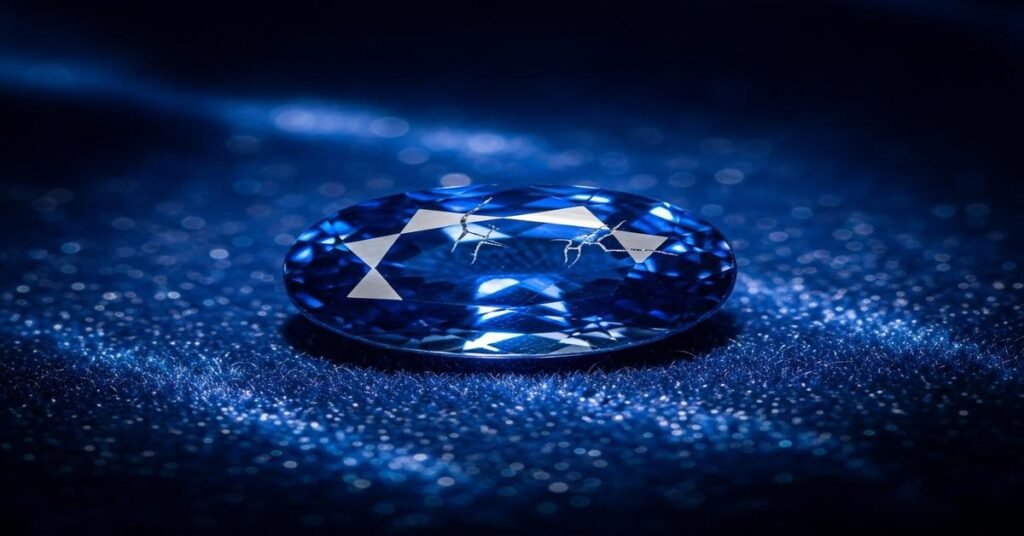Blue sapphire (Neelam) is the gemstone most often linked to Saturn (Shani) in Vedic astrology. Astrologers say it can bring powerful outcomes — good or bad — so many believers treat it like a high-stakes tool, not a fashion choice. That reputation drives two risks: (1) losing a lot of money buying the wrong stone, and (2) experiencing unwanted effects if you wear a gem that isn’t right for your chart or your body. Below are the three practical rules you must follow before wearing a blue sapphire in 2025. Each rule blends gemology, buying strategy, and the common astrological precautions so you protect your finances and your wellbeing.
Rule 1: Verify the Stone — Gemology First, Astrology Second
Before you accept any astrological guarantee, confirm the gem is a real corundum. Blue sapphire is aluminum oxide (Al2O3) with hardness 9 on the Mohs scale, refractive index about 1.762–1.770, and specific gravity roughly 3.95–4.03. These facts matter because a synthetic or treated stone can behave differently — and cost you dearly if sold as “natural, untreated Neelam.”
- Ask for a lab report. Always insist on a certificate from a recognized lab that states whether the sapphire is natural, heated, diffusion-treated (e.g., beryllium diffusion), glass- or resin-filled, or synthetic (Verneuil, flux, hydrothermal). A natural, heat-only treated sapphire is the usual acceptable market standard; diffusion or glass filling requires big discounts and clear disclosure.
- Know the red flags. Intense, uniform color at low price; bubbles or flow lines (glass filling); exhausted inclusions or odd color at the girdle (diffusion) — these suggest treatment or synthetic origin. Star sapphires are usually cabochon and get their asterism from rutile needles; synthetics can mimic this cheaply.
- Independent tests are cheap insurance. A gemologist can check pleochroism, RI, and specific gravity. For example, a 2–3 ct cornflower-blue sapphire with a reputable lab report is very different in value from a 2–3 ct hydrothermal stone with no disclosure. The lab report protects you from fraudulent “astrological” claims.
Rule 2: Confirm Compatibility — Chart, Metal, Finger and Dose
Astrologers differ on specifics, but three practical points recur: compatibility with your birth chart, the metal and finger used, and the size/energy of the stone.
- Get a horoscope check first. A qualified, ethical astrologer will tell you whether Saturn is benefic, malefic, or in a transit phase that calls for caution. Why it matters: astrologers believe Saturn’s energy is intense and acting too strongly can upset career, finances, and health. Practically, you avoid wasted money buying a powerful gem only to be told later it’s unsuitable.
- Choose the right mount and finger. Most tradition points to the middle finger for Saturn. Metals vary: some astrologers recommend iron or steel for Saturn to “conduce” its energy; others prefer gold (18k, i.e., 75% Au) or sterling silver (925) because of durability and allergies. From a jeweler’s view, set an eye-clean faceted sapphire in a secure bezel or prong mounting with at least 2 mm thick shank to protect the stone. If you’re allergic to nickel or base metals, insist on nickel-free alloys or 18k gold to avoid skin reactions that get blamed on the gem.
- Mind the dose — carat matters. Traditional guidance often sets a minimum weight (commonly around 1 ct) and suggests larger stones produce stronger effects. Practically, start modestly: a 1–3 ct faceted blue sapphire on the middle finger is common. If your astrologer advises a very large gem (4+ ct) because of chart strength, weigh the financial cost and insist on certified origin and a flexible return policy before committing.
Rule 3: Buy Smart and Protect Your Purchase — Avoid Ruin
“Financial ruin” often comes not from cosmic backlash but bad buying decisions. Treat the purchase like any significant investment: verify, insure, and plan an exit strategy.
- Buy from reputable sources. Prefer established dealers who provide clear invoices, lab certificates, and a written return policy. Avoid street vendors or pressurized “muhrat” sales without documentation. Example: a credible seller will hand you a graded report saying “natural, heated sapphire — no diffusion” and a 30-day return window. That paperwork eliminates most catastrophic losses.
- Insure and appraise. For high-value stones, get a professional appraisal and add the ring to your household or jewelry insurance. If you lose the gem or discover undisclosed treatment later, insurance mitigates the financial hit.
- Stage your experiment. If you follow the astrologer’s advice to “test” the gem, do it sensibly. Ask for a trial period, or begin wearing a lower-cost stone first. Many astrologers recommend a 24–48 hour test of the genuine gem; insist the seller allow you to return it if you experience adverse effects or if the gem doesn’t match the lab report.
- Understand care and limits. Some treatments (glass filling) can be destroyed by heat or harsh chemicals. Avoid ultrasonic cleaners and hot steam for filled stones. Regular maintenance prevents accidental damage and resale loss.
- Set a budget and stick to it. The pressure to “buy the most powerful stone” is a fast path to overspending. Decide in advance how much you will pay — including appraisal and insurance — and don’t exceed it because of fear-based claims.
Bottom line: Blue sapphire is a real, valuable gem with genuine risks if misrepresented or misused. Follow these three rules: verify the gem scientifically, confirm astrological compatibility and correct setting, and protect your purchase with paperwork and insurance. Do both the gemology and the astrology properly. That way you manage both the spiritual intention and the financial reality — and avoid the kind of ruin people warn about.
I am G S Sachin, a gemologist with a Diploma in Polished Diamond Grading from KGK Academy, Jaipur. I love writing about jewelry, gems, and diamonds, and I share simple, honest reviews and easy buying tips on JewellersReviews.com to help you choose pieces you’ll love with confidence.

